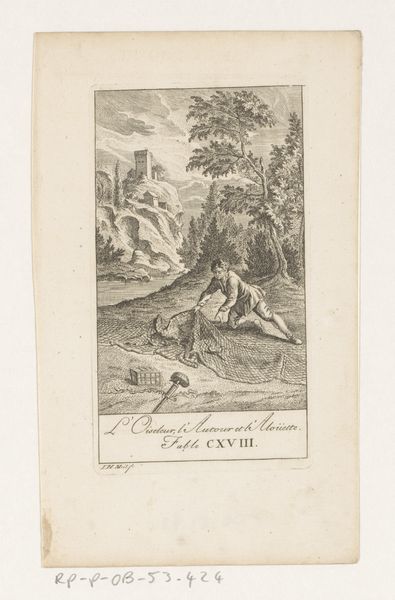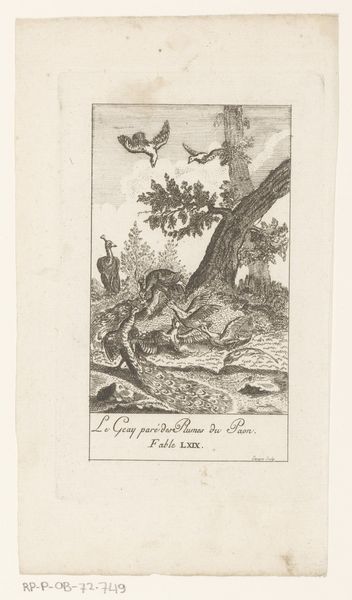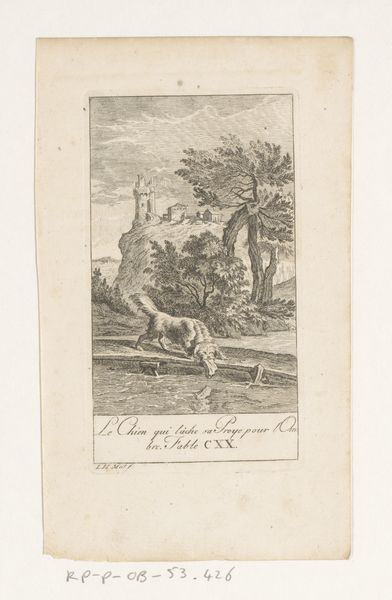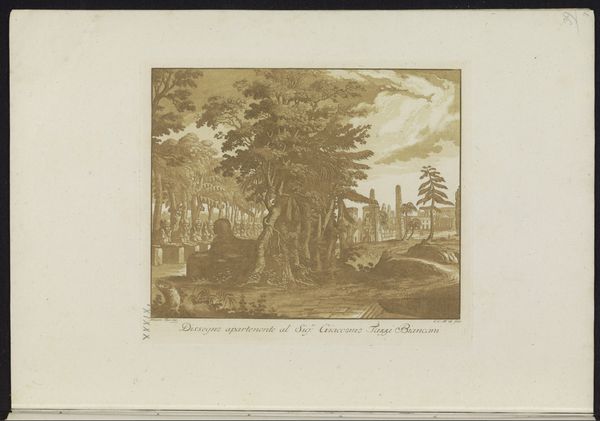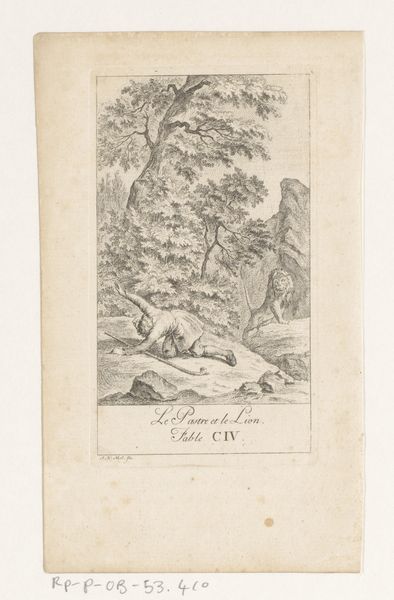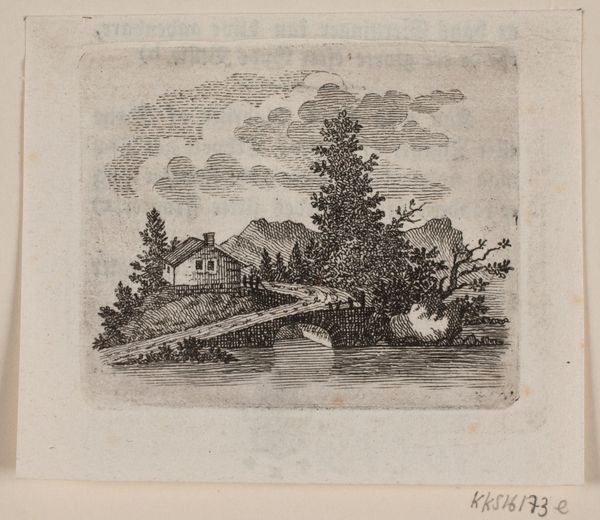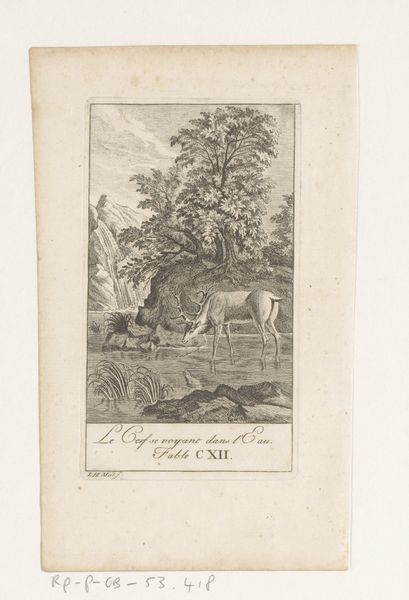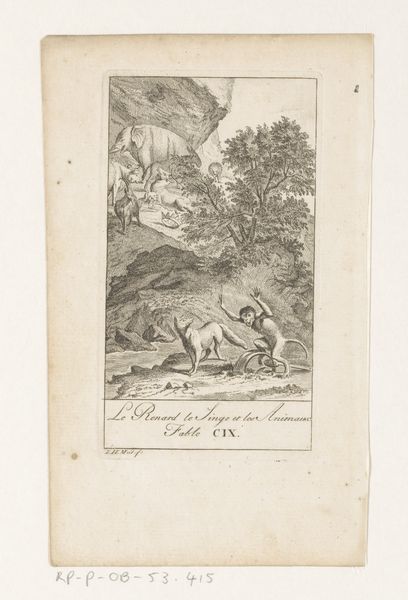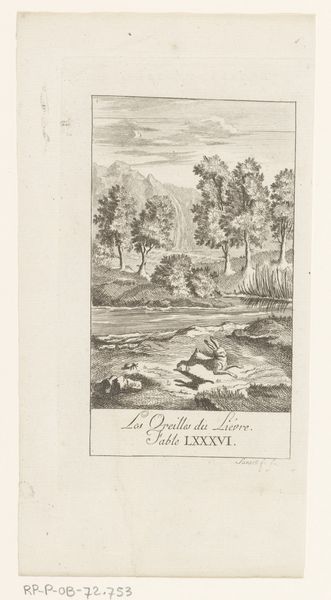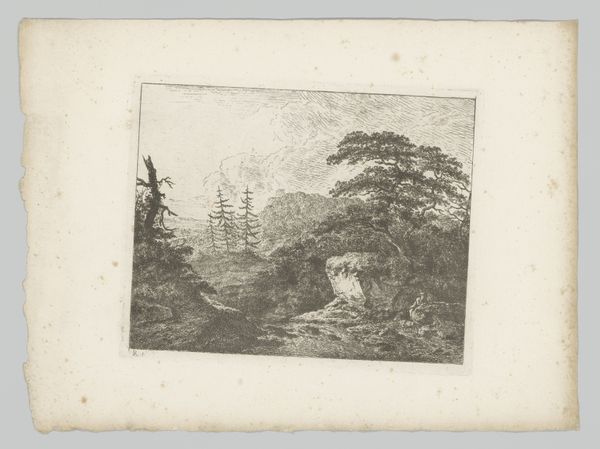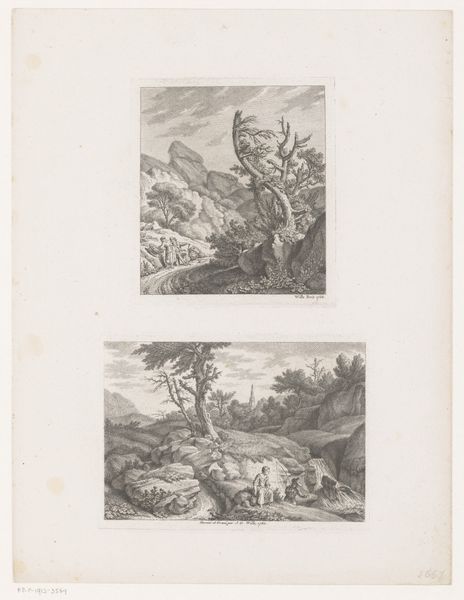
print, engraving
#
baroque
# print
#
landscape
#
figuration
#
engraving
Dimensions: height 142 mm, width 81 mm
Copyright: Rijks Museum: Open Domain
Curator: The piece we are observing is titled "Fabel van de Vlaamse gaai opgesierd met pauwenveren," or "Fable of the Jay Adorned with Peacock Feathers." Created by Johann Heinrich Meil the Elder in 1758, it’s an engraving that embodies elements of the baroque and landscape styles. Editor: At first glance, I find myself struck by the textural complexity Meil achieves with simple lines. The interplay of light and shadow gives an almost three-dimensional quality to the foliage and plumage. Curator: Meil's work often carried didactic intent. These fables, frequently depicted in prints, served as visual tools for moral instruction. Think about the rising merchant class acquiring these to not only demonstrate status but impart ethical lessons. Editor: Indeed. Beyond the narrative, the composition itself draws the eye upwards. From the lower-left cluster of peacocks, leading to the titular jay, and culminating in the soaring birds. There’s a deliberate sense of aspiration built into the image's structure. Curator: And that jay—so central to the composition. It becomes a vehicle to contemplate hubris, the folly of vanity, reflecting anxieties within 18th-century society as social mobility began challenging the established aristocracy. These images really democratized these stories in the early modern world. Editor: The engraving medium also lends itself beautifully to detail. Note the meticulous rendering of the individual peacock feathers. Each delicate line contributes to the overall effect of opulence and artifice. Curator: The fable speaks to anxieties around class, and what one has the right to perform within society. Remember the context of burgeoning colonialism; feathered creatures and exoticized ideas saturated the imagination, as seen through scientific and ethnographic endeavors of the period. Editor: As an emblem of human aspiration and delusion. Its delicate lines carry a weight of meaning about culture, commerce, and the ethics of display.
Comments
No comments
Be the first to comment and join the conversation on the ultimate creative platform.
